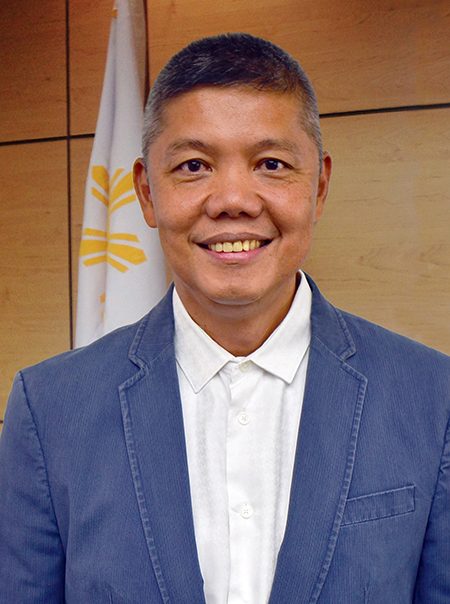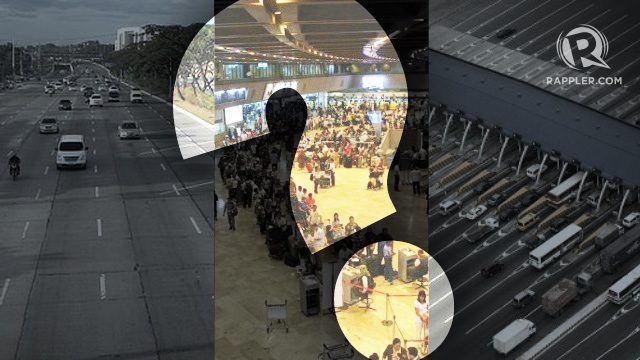SUMMARY
This is AI generated summarization, which may have errors. For context, always refer to the full article.

As enshrined in the 1987 Constitution, the government recognizes the valuable contribution of the private sector in attaining national development goals through public-private partnerships (PPPs). Further participation from the private sector is encouraged in the Build-Operate-Transfer (BOT) Law, which was passed in 1990 and amended in 1994.
Today, under the Duterte Administration’s 10-point socioeconomic agenda, PPPs are identified as one of the key strategies to accelerate infrastructure development.
Despite the success of PPPs in the Philippines, certain misconceptions continue to undermine the PPP program’s accomplishments. The PPP Center of the Philippines tackles some of these:
1. PPP is equivalent to privatization
There is a common misconception that PPP is equivalent to the privatization of projects. This, however, is not true. In PPPs, the government retains ownership of the facility, defines the extent of private sector’s participation and continues to hold regulatory oversight and control of the infrastructure project or facility.
In privatization, the government relinquishes its ownership of the asset to the private sector, who now owns and operates the asset—something PPP projects do not observe. Some examples of privatization include the power and water projects implemented under Electric Power Industry Reform Act (EPIRA) and the Water Crisis Act, respectively.
2. The PPP Center is responsible for approving projects
The PPP center does not approve PPP projects. Instead, it is tasked to serve as the central coordinating and monitoring agency for all PPP projects in the Philippines.
The PPP center is attached to the National Economic and Development Authority (NEDA) and provides technical advice to Implementing Agencies (IAs) throughout the course of the project’s lifecycle.
The IA identifies an Investment Coordination Committee (ICC) Technical Working Group (TWG), who in turn evaluates the project. The ICC-Cabinet Committee and NEDA Board, which is chaired by the President of the Philippines, is the body that ultimately approves PPP projects.
3. The government provides guarantees to awarded PPP projects
While the BOT Law provides for several forms of government support or contribution such as government guarantees or direct government subsidies to a PPP project, the government has not provided guarantees to any of the PPP projects awarded since 2010.

4. PPP projects are more expensive than other government procurement options
PPP projects are not necessarily more expensive, especially because the projects these undergo a value for money assessment during project development, evaluation and approval stages.
A PPP project is said to achieve value for money if it costs less than a public sector comparator (i.e. the same, if not similar, project delivered under the traditional procurement method).
Also, most PPP bids received in recent years cost less than the approved government costs. If in the instance an actual project’s costs turned out higher than approved government costs, the private sector partner shoulders cost overrun risk.
PPPs can be more cost-efficient overall if one considers the project’s lifecycle cost, including operations and maintenance, and the transfer of risk to the private sector.
5. PPP contracts favor big conglomerates
In the Philippines, most of the signed PPP contracts were awarded to big conglomerates, prompting criticisms that the process tends to favor only the major player
However, the existing PPP framework encourages open competition and ensures a leveled playing field for all PPP players through transparent and credible processes.
Both local and foreign investors, large and small companies, that choose to participate in PPPs undergo property scrutiny of their legal, financial, and technical capacities to ensure that they are able to finance, construct and implement large, complex infrastructure projects.
6. PPP projects are anti-competitive
There are also allegations that unsolicited proposals, such as the recently awarded NLEX-SLEX Connector Road, do not undergo a competitive and transparent bidding process.
But contrary to this, unsolicited projects are subject to a ‘Swiss challenge’ – where the government invites other private sector parties to match or exceed the unsolicited proposal or bid.
In the case of NLEX-SLEX Connector Road, the DPWH advertised in a newspaper of general circulation, an invitation to other interested parties to submit comparative proposals. Details of the unsolicited proposal process are posted in the PPP Center website for transparency.
Understandably, there are persistent concerns surrounding the treatment of unsolicited proposal process both internationally and locally. Policy efforts to institutionalize PPP best practices in this aspect are underway to further strengthen the PPP unsolicited proposal framework.
Golden Age of Infrastructure
The infrastructure push of the current administration is emphasized in the recent Dutertenomics’ “Build, build. Build” initiative. PPPs are a way to achieve this.
PPPs free up the much-needed fiscal resources that can be used to fund other immediate needs including health care and other social services.
PPPs also offer alternative financing solutions to the country’s massive infrastructure needs.
For instance, the PPP for School Infrastructure Project (PSIP) of the Department of Education has contributed to immediately addressing the classroom shortage throughout the country. The PSIP-Phase 1 supplemented the existing initiatives on classroom building nationwide.
Here, the PPP track served as a viable option apart from the traditional procurement methods, which use government funds or Official Development Assistance (ODA)—both of which were both not available at the time the project was being developed.
In pursuit of President Rodrigo Duterte’s administration goal of accelerating infrastructure spending, there is a need to take stock of all available procurement options to determine the optimal solution that serves the interest of the Government and the public.
PPPs remain a significant and relevant player in attaining the Philippines’ vision of the Golden Age of Infrastructure, complementing the current thrust of using traditional procurement and tapping ODA. –Rappler.com
Ferdinand A. Pecson is the Executive Director of the Public Private Partnership Center of the Philippines. Pecson was the former vice president at Holcim Philippines for 7 years and senior consultant at PHINMA Corporation for 6 years. He also served as an assistant professor at the Department of Engineering of the University of the Philippines Diliman from 1981 to 1992.
Add a comment
How does this make you feel?
There are no comments yet. Add your comment to start the conversation.